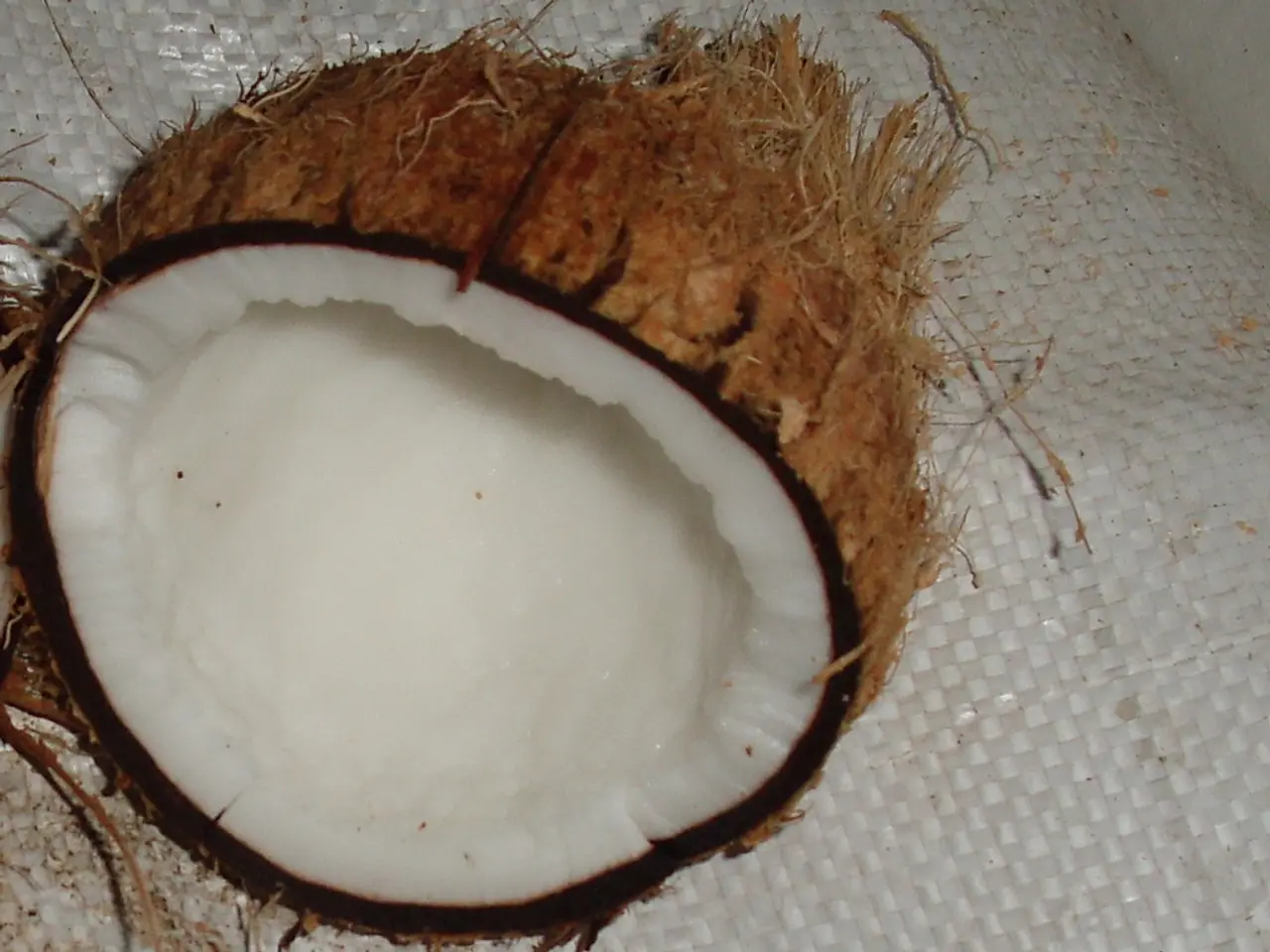Coconut Milk Exploration: Nutritional Advantages, Composition, Applications, and Potential Hazards
In the culinary world, coconut milk is a popular ingredient, particularly in Indian and Malaysian cuisines. However, beyond its culinary uses, coconut milk has garnered attention for its potential health benefits. But, the production process significantly influences these benefits.
The production process of coconut milk involves several stages, with thermal processing being crucial for ensuring safety. Techniques such as high-temperature short-time (HTST) and ultra-high temperature (UHT) treatments kill harmful microbes and spores, but can also lead to undesirable changes in nutritional, chemical, physical, and sensory properties. Balancing microbial safety and nutrient retention is essential, with careful control of temperature and time being key.
Coconut milk, being a homogenized mixture of water and coconut flesh, is sensitive to physical stresses during processing. Excessive shearing or separation caused by harsh heat exchangers can degrade the product’s texture and potentially affect bioactive compounds. Gentler heat exchangers like corrugated tube or specially designed scraped surface exchangers are preferred for preserving integrity.
Emerging non-thermal or mild thermal technologies, such as high-intensity ultrasound, microwave, high-pressure processing, and pulsed electric fields, show promise in effectively inactivating enzymes and microorganisms without causing significant nutrient or sensorial losses. These methods could potentially enhance the health benefits of coconut milk compared to conventional thermal processing.
Properly controlled processing ensures coconut milk remains a rich source of nutrients and bioactive compounds, supporting its health benefits while offering a safe, stable product for consumption. However, it's important to note that the nutritional contents of coconut milk vary by product, with manufacturers often adding stabilizers to prevent separation and ensure a smooth finish.
Coconut milk can be thick or thin, with coconut milk beverages being thinner and having a consistency closer to dairy milk, requiring refrigeration, and some brands adding sugar. Canned coconut milk, on the other hand, has a thick, cream-like consistency and is higher in fat, used for baking or cooking.
One of the unique components of coconut milk is medium-chain triglycerides (MCTs), which may stimulate energy through thermogenesis, promote weight loss, boost exercise endurance, and improve insulin sensitivity. Additionally, some evidence suggests that lauric acid, an antioxidant present in coconut milk, may help prevent stroke and heart disease.
However, it's worth noting that coconut milk is high in saturated fat, making it a calorie-rich food. Allergic reactions to coconut are rare but can be severe, especially for Black and Asian Americans. Anaphylaxis, a severe, life-threatening reaction, requires immediate medical attention.
It's best to buy coconut milk products with few ingredients and to watch out for added sugars, preservatives, and artificial thickeners. The nutritional profile for 1 cup of raw, unsweetened coconut milk for cooking includes: 552 calories, 162 g water, 5.5 g protein, 57.1 g fat, 13.3 g carbohydrates, 38.4 milligrams (mg) calcium, 631 mg potassium, 88.8 mg magnesium, 3.94 mg iron, and 6.72 mg vitamin C.
In conclusion, the production process of coconut milk plays a significant role in determining its health benefits. Properly controlled processing ensures coconut milk remains a rich source of nutrients and bioactive compounds, supporting its health benefits while offering a safe, stable product for consumption. However, more research is necessary to confirm these health benefits.
- In the realm of cooking, coconut milk, especially prominent in Indian and Malaysian cuisines, is a favored ingredient, yet its potential health advantages have drawn attention.
- The production process of coconut milk entails multiple stages, with thermal processing being vital for safety, employing techniques like HTST and UHT.
- Balancing microbial safety and nutrient retention is pivotal, as careful control of temperature and time is essential in the process.
- Excessive shearing or separation during processing can affect the product's texture and potentially degrade bioactive compounds.
- Gentler heat exchangers, such as corrugated tube or specially designed scraped surface exchangers, are preferred for maintaining the product's integrity.
- Emerging non-thermal or mild thermal technologies, like high-intensity ultrasound, microwave, high-pressure processing, and pulsed electric fields, may enhance coconut milk's health benefits compared to conventional thermal processing.
- Coconut milk, being a homogenized mixture of water and coconut flesh, offers a rich source of nutrients and bioactive compounds when properly processed.
- One unique component of coconut milk is medium-chain triglycerides (MCTs), which may stimulate energy, promote weight loss, boost exercise endurance, and improve insulin sensitivity.
- Although lauric acid, an antioxidant in coconut milk, may help prevent stroke and heart disease, it's worth noting that coconut milk is high in saturated fat, making it a calorie-rich food.
- Allergic reactions to coconut are rare but can be severe, especially for Black and Asian Americans, with anaphylaxis requiring immediate medical attention.
- To enjoy coconut milk's benefits, it's best to choose products with minimal ingredients, as some brands may include added sugars, preservatives, and artificial thickeners.
- More research is needed to confirm coconut milk's health benefits, but proper processing can ensure it remains a valuable source of nutrients and bioactive compounds for overall health, nutrition, and well-being.




